Color urine during pregnancy
Why is there a change in urine colour in pregnancy?
Change in urine color is a common thing noticed by pregnant women. If you take a look in the toilet after urinating, you will notice that it is darker as compared to the usual light-yellow. This change in urine color can be normal, but in some cases, it might be a sign of problems caused during pregnancy. This change in color goes from light yellow to dark yellow or a brighter shade of yellow. There are numerous reasons attributed to these changes.
Table of Contents
Is there any change in urine color during pregnancy?Normally, the color of urine can be light yellow or yellow to transparent. But for a pregnant woman, this change is more prominent and noticeable. The urine color can change from light yellow to dark yellow. It can go to an orange-yellow shade too.
Urochrome, also called urobilin, is the component that renders urine its color. When the hemoglobin in our body breaks down from dead erythrocytes, urobilin is produced.
When our body is hydrated, and the urine is in a dilute form, the concentration of urobilin decreases, and the urine is lighter in shade. On the contrary, if there is a lack of water in your body and you are dehydrated, the concentration of urobilin increases, and the color of urine becomes dark yellow. There many more reasons for the change in urine color during pregnancy.
Pregnancy has a significant effect on the working of kidneys. Also, the intake of vitamins and routine medication that is taken during pregnancy along with the changes in diet affect the color of urine.
Why is there a Change in Urine Color in Pregnancy?
The following is a list of reasons that might be a potential reason for the change in urine color when you’re pregnant.
- Lack of water in the body, i.e, dehydration.
- Infections in the urinary bladder.
- UTIs or Urinary Tract Infections.
- Changes in diet during pregnancy.
- Medication and Vitamins that are taken during pregnancy.

- Presence of blood in urine, i.e, hematuria.
- Kidney stones and diseases.
A lot of women confirm their pregnancy with a urine-based home pregnancy test kit. After about two weeks of conceiving, a pregnancy test kit can easily detect the presence of human chorionic gonadotropin. This hormone is released in the body during pregnancy. It is produced in the placenta, which gives nourishment to the fertilized egg implanted to the uterus walls.
The levels of human chorionic gonadotropin increase abruptly and the most during the first three months. It gradually decreases in the remaining six months.
Urine Tests that can be taken during PregnancyIt is important to take urine tests at regular intervals during pregnancy. Regular urine tests are capable of giving a clear status of your health, and urinalysis helps the doctor to detect issues related to the pregnancy if any in time. The tests help to diagnose infections in the kidney and diabetes.
The tests help to diagnose infections in the kidney and diabetes.
Kidney disorders or a UTI are indicated by a high level of protein in the urine. The presence of red blood cells or erythrocytes could also be indicative of a urinary tract infection. High sugar levels are indicative of gestational diabetes, which is a possibility in the second trimester.
Never skip or delay urine tests in pregnancy as they can help your doctor to diagnose any unusual disorder in the body.
What is an indication that you need to visit your doctor?Change in urine color is normal during pregnancy, just like the other changes that the body goes through. As said before, the change in the color of urine is not always an indicator of an underlying problem. It could simply be a result of dehydration, and drinking more water will solve the issue.
Therefore, if you notice a change in color of urine, there is no need to panic or feel scared. Hydrate yourself and drink enough water.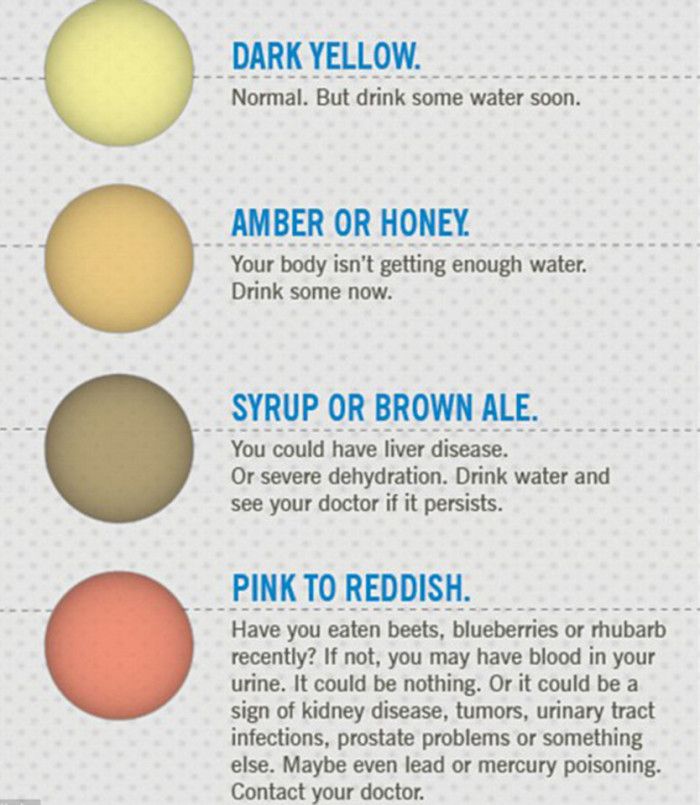 However, if the urine color does not change back to normal, visit your doctor.
However, if the urine color does not change back to normal, visit your doctor.
Urine Changes to Expect During Pregnancy
During pregnancy, many of the body’s functions change, including urination. Changes in urine can tell you whether you’re pregnant and alert you to health issues during pregnancy.
Monitoring changes in your urine, reporting these changes to your doctor, and getting appropriate urinalysis tests can help keep you and your baby healthy during pregnancy.
How Changes in Urine Show Up in Pregnancy TestsMany women will discover they are pregnant when they take a urine-based home pregnancy test.
About 12 to 15 days after conception, a urine test should be able to detect levels of the hormone human chorionic gonadotropin (hCG), according to Mount Sinai. HCG is a hormone made by the placenta when you are pregnant, and it appears after the embryo attaches to the wall of the uterus. HCG levels increase quickly and peak within the first trimester, after which they will declining slightly.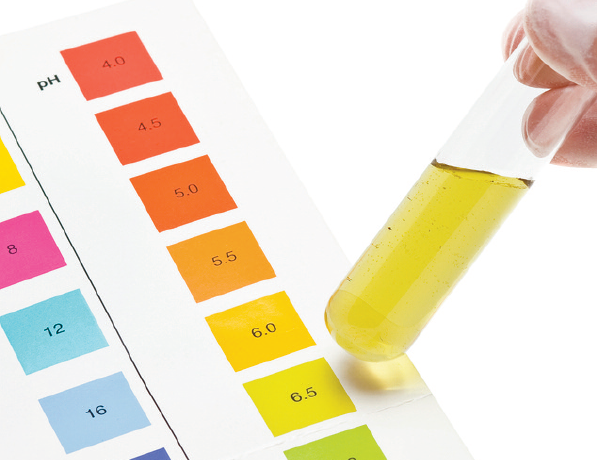
The U.S. Food and Drug Administration (FDA) recommends testing one to two weeks after you miss your period, and with your first urination of the day, for the most dependable results. Your healthcare professional can also test for hCG using a blood test to confirm pregnancy status.
HCG levels are measured in milli-international units per milliliter (mIU/ml), which increase as pregnancy progresses. If you’re not pregnant, the HCG reading will be less than 5 mIU/ml. The expected HCG level is based on the length of the pregnancy. At three weeks, hCG will be between 5 and 72 mIU/mL and will likely result in a positive test, per Mount Sinai.
Low levels of hCG, the hospital notes, may suggest a miscarriage or an ectopic pregnancy, while extremely high levels of hCG may suggest that there is more than one fetus (twins or triplets), a molar pregnancy (in which there’s a genetic error during the fertilization process), or, more rarely, ovarian cancer. After a pregnancy loss, it takes roughly four to six weeks for hCG levels to return to normal.
Pregnancy kit manufacturers say that at-home pregnancy tests are 97 to 99 percent accurate when used as directed on the package, according to the Cleveland Clinic. Positive results can be trusted, but you can get a false negative result very early in pregnancy.
The Cleveland Clinic recommends taking a pregnancy test in the morning as soon as you wake up, because this is when urine is the most concentrated with hCG.
How Urine Changes Throughout Pregnancy
Many pregnant women will experience changes in their urine throughout their pregnancy, and many may notice that they are urinating more frequently than normal even before they have missed their first period or taken a pregnancy test, per the Cleveland Clinic. This happens because the body begins producing the pregnancy hormone hCG after implantation of the embryo in the uterus, and this hormone can cause frequent urination.
As the fetus grows, the uterus begins to press on the bladder, making it smaller in size.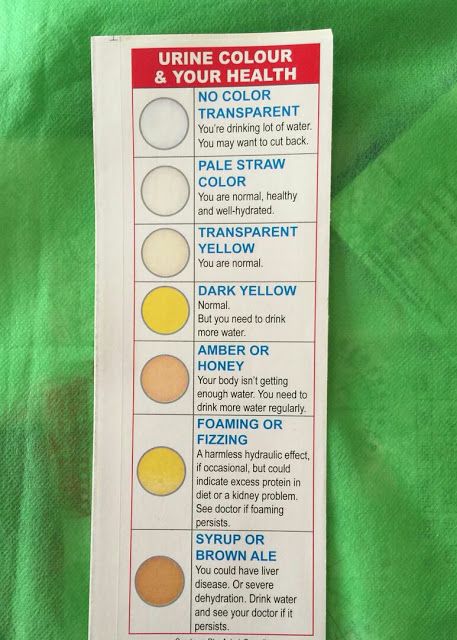 This makes it fill with urine more quickly, and you’ll will feel the urge to urinate more often and more urgently, according to Merck Manual. As the pregnancy continues, the uterus pushes down on the bladder, urethra, and pelvic floor muscles, and this pressure also leads to the urge to urinate more frequently.
This makes it fill with urine more quickly, and you’ll will feel the urge to urinate more often and more urgently, according to Merck Manual. As the pregnancy continues, the uterus pushes down on the bladder, urethra, and pelvic floor muscles, and this pressure also leads to the urge to urinate more frequently.
It’s also normal for some urine to leak when you sneeze, cough, or laugh. It may help to take frequent bathroom breaks, and to practice Kegel exercises to strengthen the pelvic floor muscles, according to the Office on Women’s Health.
Common Changes in Urine During PregnancyThe color and smell of your urine can change when you’re pregnant.
If your urine looks darker and more concentrated, it could be a sign that you are dehydrated, per the Cleveland Clinic. Pregnant women need to drink more water than normal, and your urine color can help you determine whether you’re getting enough fluids. Morning sickness, and especially hyperemesis gravidarum (severe morning sickness) — which can cause vomiting — can also lead to dehydration, according to the American College of Obstetricians and Gynecologists (ACOG).
When you become pregnant, your hormones may cause urine odor to change. But a strong urine odor may also indicate a urinary tract infection, per the ACOG. Interestingly, some women may be more aware of the naturally occurring ammonia-like smell of urine during pregnancy because of their heightened sense of smell, research suggests.
Blood may show up in your urine due to vaginal bleeding. If you notice this at any time during your pregnancy, contact your doctor, per the ACOG. Some women may experience light implantation bleeding at the very beginning of their pregnancy, which is not necessarily a sign of a problem. Women may also experience light bleeding after sex, an internal exam, or a pap smear. Vaginal bleeding can also be a sign of an infection of the vagina or cervix, according to the ACOG.
Pregnancy and an Increased Risk of Urinary Tract InfectionsPregnant women are at a higher risk of urinary tract infections; up to 10 percent of women will develop at least one UTI throughout the course of their pregnancy, according to previous research. UTIs happen when bacteria enter the urethra and infect the bladder, ureters, or the kidneys. Because muscle-relaxing hormones increase during pregnancy, bacteria have an easier time entering the urinary tract.
UTIs happen when bacteria enter the urethra and infect the bladder, ureters, or the kidneys. Because muscle-relaxing hormones increase during pregnancy, bacteria have an easier time entering the urinary tract.
According to the ACOG, symptoms of UTIs tend to come on quickly and may include strong urge to urinate, known as urinary urgency, which may be accompanied by a sharp pain or burning in the urethra. Another common symptom is feeling the need to urinate again soon after the last bathroom trip.
If you notice that your urine has a strong odor, looks cloudy or is tinged with blood, these may also be signs of a UTI per the ACOG. Call your healthcare provider if you see blood in your urine. While it may be caused by a UTI, it also may be caused by other conditions.
In pregnancy, UTIs can be serious because they can affect your health and your baby’s health and put you at risk for preterm delivery, per the ACOG. To diagnose a UTI, your doctor may perform a urinalysis to detect the presence of bacteria, as well as test for white and red blood cells. UTIs are typically treated with a round of antibiotics, and sometimes more serious kidney infections must be treated with intravenous medication at a hospital, according to an article published in July 2021 in StatPearls.
UTIs are typically treated with a round of antibiotics, and sometimes more serious kidney infections must be treated with intravenous medication at a hospital, according to an article published in July 2021 in StatPearls.
As Mayo Clinic notes, pregnant women can prevent UTIs or speed their recovery by drinking plenty of fluids, emptying the bladder before and after sex, keeping the vaginal area clean, and emptying their bladder thoroughly while urinating. Wearing cotton underwear, avoiding tight pants or leggings, avoiding bubble baths, and wiping front to back after bowel movements can also prevent UTIs.
Pregnancy and Group B Strep DiseaseGroup B streptococcus (GBS), a bacterium that often lives in the intestines or lower genital tract, is a potential cause of a UTI, per Mayo Clinic. Yet in pregnancy, GBS may simply be part of a woman’s vaginal flora, rather than the cause of a UTI. Pregnant women are tested for GBS in late pregnancy, typically between weeks 35 and 37, via a vaginal and rectal swab.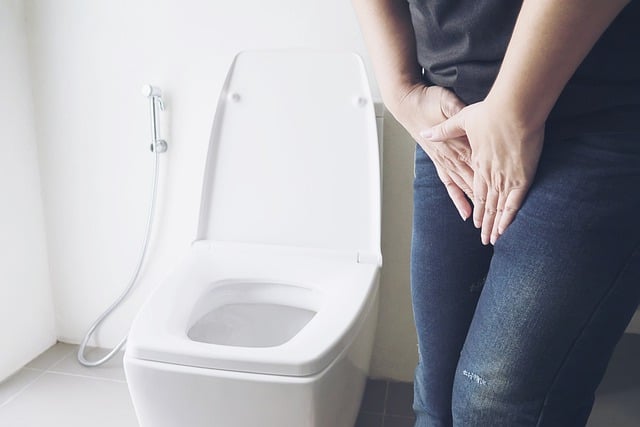 If a woman tests positive, the antibiotic penicillin is given to her during labor to prevent early-onset GBS infection in newborns, per the ACOG.
If a woman tests positive, the antibiotic penicillin is given to her during labor to prevent early-onset GBS infection in newborns, per the ACOG.
Untreated, GBS can spread to infants during delivery and cause group B strep disease in newborns.
Sometimes GBS has an early onset, with newborns experiencing symptoms like fever, lethargy, and difficulty feeding within a week after birth. Or the newborn can develop late-onset symptoms of group B strep disease within a few weeks or months after birth, per the Mayo Clinic.
The Importance of Urine Testing During PregnancyYour healthcare provider will conduct a urinalysis at your first prenatal appointment and then several times throughout your pregnancy. According to the ACOG, testing may be done to see if you have a urinary tract disease, UTI or early signs of diabetes.
Urine tests also measure protein content. The ACOG says that High levels of protein in urine may signal preeclampsia, a condition marked by high blood pressure that can cause a range of health issues for mothers and growing fetuses.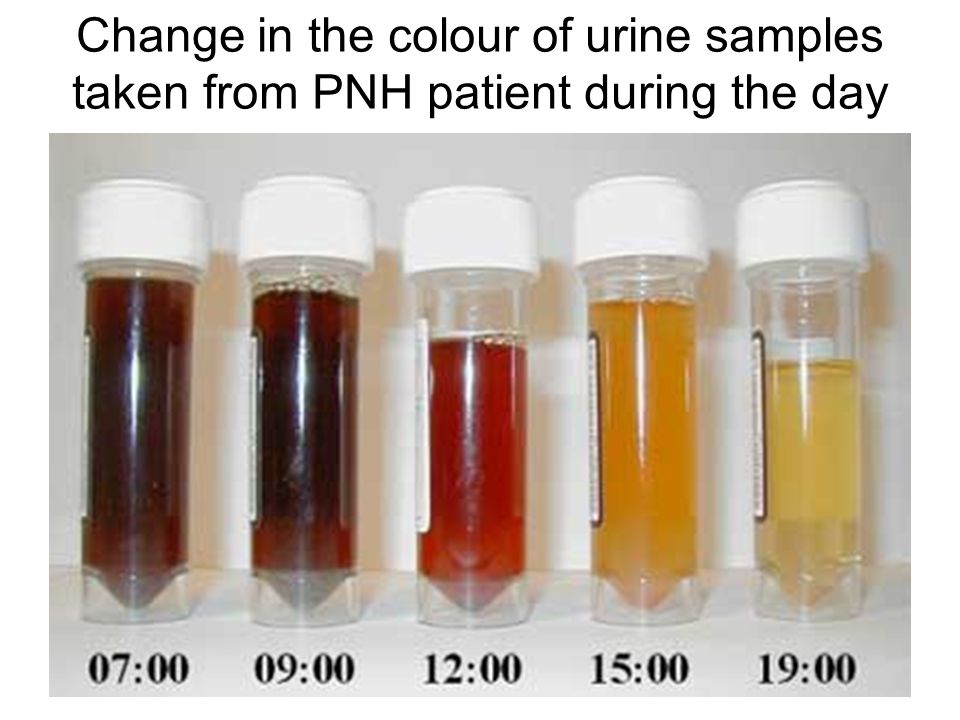 Other potential signs of preeclampsia may include headache, edema, nausea, and vomiting.
Other potential signs of preeclampsia may include headache, edema, nausea, and vomiting.
High protein levels in urine may also indicate that you have a urinary tract infection or more serious kidney disease, per the ACOG. Your healthcare provider will flag these findings for you.
Large amounts of sugar in the urine may signify gestational diabetes, which typically develops in the second trimester. According to Mayo Clinic, women with gestational diabetes are usually asymptomatic.
The Latest in Urine
Frequent Urination: Symptoms, Causes and Treatment
By Kathleen Smith, PhD, LPCWhat Causes Cloudy Urine in Women and Men?
By Kathleen Smith, PhD, LPCWhat Does Burning or Painful Urination (Dysuria) Mean?
From urinary tract infection to prostate disease, there are many possible causes of pain or discomfort during urination.
By Kathleen Smith, PhD, LPC
Ketones in Urine: When and Why to Test for Them and What They Mean
In people with diabetes, high levels of ketones in the urine can indicate a serious complication called diabetic ketoacidosis. But excess ketones can ...
By Kathleen Smith, PhD, LPC
Urinalysis: Purposes, Types, Results
A urine sample can reveal a lot about why you’re experiencing certain symptoms, and whether a symptom may indicate a current or future medical condition...
By Kathleen Smith, PhD, LPC
Protein in Urine (Proteinuria): Causes, Symptoms, Treatment
By Kathleen Smith, PhD, LPCWhat Causes Blood in Urine (Hematuria)?
By Kathleen Smith, PhD, LPCWhat Your Urine Says About You and Your Health
By Kathleen Smith, PhD, LPCWhat Do the Color and Smell of Your Urine Tell You?
From pale yellow to green, the color of urine can change drastically, as can its smell — often indicating a health issue.
By Kathleen Smith, PhD, LPC
How the color of urine changes during pregnancy
Pregnancy and childbirth
- Photo
- Pixel-Shot — stock.adobe.com
And whether the color of urine changes during pregnancy, a woman can verify this personally when collecting urine. As a rule, a pregnant woman's immunity decreases, which can lead to the development of various ailments, which are indicated by a changed color of urine.
What is the normal color of urine during pregnancy?
During normal pregnancy, the color of urine is yellow. It can vary from light yellow to amber. The intensity of its color is affected by:
- degree of concentration;
- peculiarities of the pregnant woman's diet;
- the amount of liquid you drink;
- the presence of physical activity.

The drinking regime strongly affects the shade of urine. If the expectant mother consumes a lot of liquid, then the urine is usually light yellow, and sometimes almost colorless. You should also be aware that the morning portion of urine always has a more intense color than the daytime. This is due to the fact that at night, a pregnant woman, as a rule, does not drink water, and therefore the urine is concentrated and becomes dark yellow.
What does change in urine color mean during pregnancy?
In the first trimester, urine may become dark in color due to toxicosis, as a result of which the body of the expectant mother is dehydrated. During this period, you need to drink as much liquid as possible.
- Photo
- Alexander Raths — stock.adobe.com
Urine color may change due to diet. For example, when eating beets and carrots, their color turns pink. The greenish-yellow color comes from eating rhubarb. The medications you take can also significantly change the color of your urine.
The greenish-yellow color comes from eating rhubarb. The medications you take can also significantly change the color of your urine.
When taking activated charcoal, it turns brown, aspirin - pink, vitamins and medicines for the treatment of kidney ailments - bright yellow.
Urine changes color in some diseases. It becomes:
- pinkish or reddish with an inflammatory process in the kidneys or bladder;
- brownish or brown-green in pathologies of the liver and gallbladder;
- nearly colorless in diabetes mellitus;
- deep dark yellow for heart failure;
- black for hemolytic anemia.
In addition to changing the color of the urine with the development of various ailments, a pregnant woman also has other symptoms. Based on the analysis of urine and the signs found, the doctor will establish the correct diagnosis and prescribe the appropriate treatment ( read also : Why the stomach and lower back hurt during pregnancy are non-obvious reasons).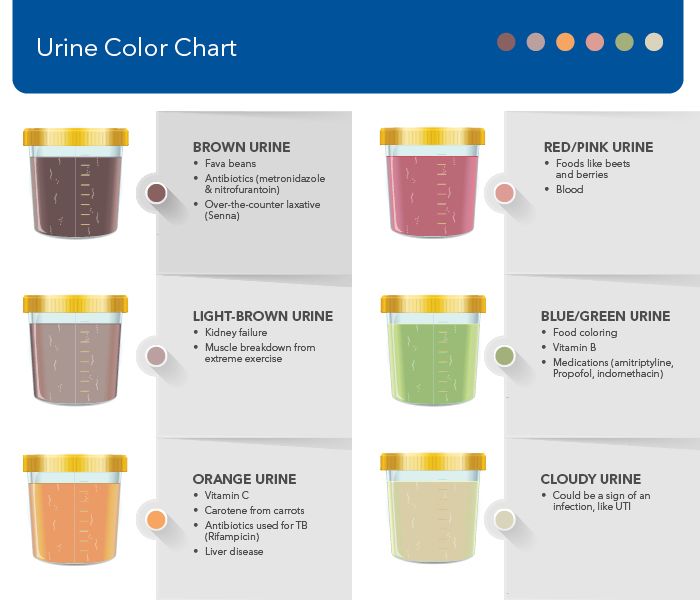
Don't panic if the color of your urine changes a lot during pregnancy. This may be due to diet or certain medications. But you should definitely share your doubts with your doctor ( see also : 10 pregnancy myths you should stop believing).
Yuliya Ionina
Tags
- pregnancy and childbirth
Reading today
Is she out of her mind? Otpad shoe purchases on AliExpress0003
Why, by the age of 40, the daughter of Peter the Great turned from a beauty into a monster — and this is not an exaggeration, but a historical fact
A woman undergoes many different tests during pregnancy. The most frequent, and at the same time the simplest study is a urinalysis. It is taken regularly, before each visit to the doctor of the antenatal clinic, that is, at least 12 times during pregnancy.
Why take a urine test during pregnancy
Urine is formed in the kidneys during blood filtration, with it the decay products formed during metabolism, salts, vitamins, hormones are excreted from the body. Based on this analysis, one can judge the work of the kidneys and other organs. The main component of urine is water (92-99%). Approximately 50-70 dry substances are removed from the body with urine every day, most of which are urea and sodium chloride. The composition of urine varies significantly even in healthy people, depending on the diet, drinking regimen and medication. During pregnancy, a regular study of a general urine test allows you to suspect in time the initial pathological processes in the body of a future mother, for example, the development of a urinary tract infection or toxicosis in the second half of pregnancy. For a correct assessment of the results of the analysis, urine must be collected correctly.
How to donate urine for analysis
On the eve of the test, it is recommended to refrain from intense physical activity, do not eat a lot of meat products, salty, sour and spicy foods, as well as coloring foods (beets, carrots, etc. ). This can lead to a distortion of the result - the appearance of protein and salts in the urine. For a general urinalysis, it is preferable to collect the morning portion of urine.
). This can lead to a distortion of the result - the appearance of protein and salts in the urine. For a general urinalysis, it is preferable to collect the morning portion of urine.
Thorough toilet of the external genitalia with warm water and soap is carried out beforehand. It is better to close the vagina with a cotton swab to prevent secretions from entering the urine sample. Urine is collected in a clean, dry container. For analysis, an average portion of urine is used, that is, for the first few seconds you need to urinate into the toilet, then into a jar, and the remains again into the toilet.
Urine should be delivered to the laboratory within two hours of collection and it is advisable to try not to subject it to strong shaking during transport. It is allowed to store urine in the refrigerator at a temperature of +2-+4 degrees, but not more than 1.5 hours. It is desirable that the amount of material collected for the study be at least 70 ml.
What a urinalysis shows and how it is evaluated
In a urinalysis, many parameters are evaluated.
Color
Normal urine has a yellow color of various shades. The shade depends on the degree of saturation of urine with a special pigment - urochrome. A change in the color of urine can occur when taking certain medications (for example, vitamins can give a bright yellow color, aspirin - pink). However, much more often a change in the color of urine indicates the presence of any pathological processes in the body. When blood appears in the urine, which occurs in diseases of the kidneys and bladder, the urine becomes bright red (with renal colic, cystitis) or the so-called “color of meat slops” (with acute inflammatory kidney damage). With increased destruction of red blood cells (erythrocytes), urine acquires a reddish-brown hue. Yellow-brown (or beer-colored) urine occurs with liver diseases.
Transparency
Normally, transparency should be complete. Turbidity of urine can be the result of the presence in the urine of erythrocytes, leukocytes, epithelium, bacteria, fat droplets, precipitation of salts.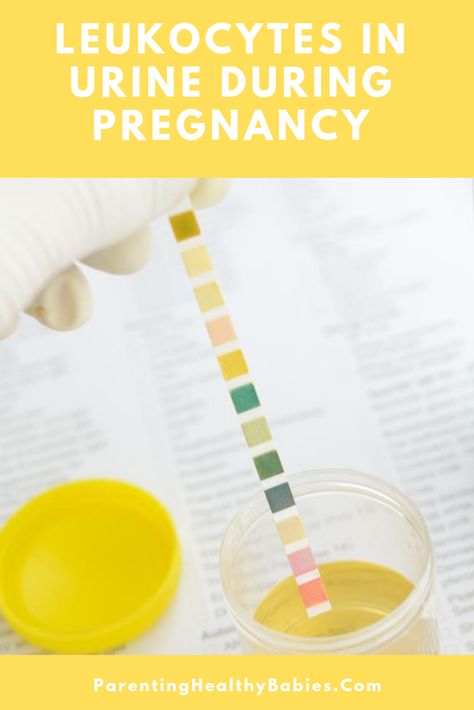
Relative density (specific gravity)
This is an indicator that characterizes the amount of trace elements, salts, various compounds. Normally, the specific gravity is 1003 - 1035 g / l. This indicator may decrease in the presence of glucose or protein in the urine, with toxicosis of the first half of pregnancy, dehydration. An increase in specific gravity occurs in chronic renal failure, diabetes insipidus, and heavy drinking.
Protein
Protein content in urine is one of the most important indicators of kidney function. Normally, it shouldn't be. A small amount of protein in the urine (physiological proteinuria) can also be found in healthy people, while the protein concentration does not exceed 0.033 g / l, in modern laboratories with more sensitive equipment - 0.14 g / l. The appearance of protein in the urine is noted in diseases of the kidneys, inflammatory diseases of the bladder and urinary tract. The presence of protein in the urine, combined with increased blood pressure and edema, is a sign of a serious complication of pregnancy - late preeclampsia, which can lead to seizures and even death of a pregnant woman and fetus.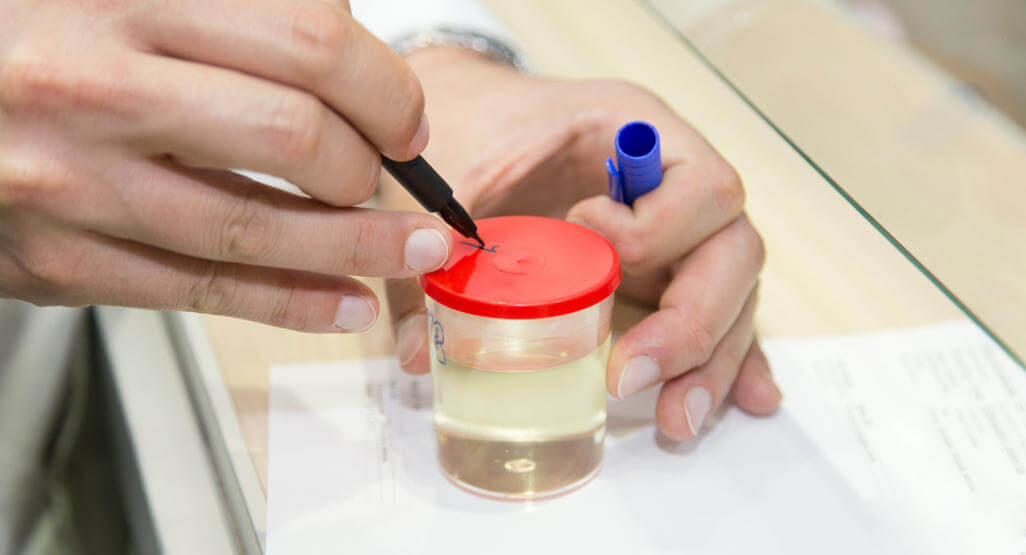
Glucose
Normally, there is no glucose in the general urine test. However, in the second half of pregnancy, the presence of glucose in the urine (glucosuria) can normally be detected. This is due to increased filtration of glucose in the kidneys. Since the appearance of glucose in the urine can be a sign of a serious illness - diabetes mellitus, acute inflammation of the pancreas, all patients with glucosuria need an additional examination - blood glucose control, sometimes even a glucose tolerance test with a sugar load - determination of blood glucose on an empty stomach and 2 hours after taking 75 grams of glucose.
Bilirubin
This is a blood pigment that is formed as a result of metabolic processes in the body and is excreted with bile into the gastrointestinal tract. With an increase in the concentration of bilirubin in the blood, it begins to be excreted by the kidneys and found in the urine. This occurs mainly with liver damage or mechanical obstruction of the outflow of bile.
Urobilinogen
This is a conversion product of bilirubin. Normally, it is excreted in the bile and practically does not enter the urine. The appearance of urobilinogen in the urine occurs in liver diseases, poisoning, increased decay of red blood cells - erythrocytes.
Ketone bodies
These are products formed during the breakdown of fatty acids in the body. Normally, there are no ketone bodies in the urine test. Determining them is very important in diagnosing the adequacy of diabetes therapy. The appearance of ketones can occur in the first trimester of pregnancy with early toxicosis and indicate dehydration.
Nitrites
These are salts of nitrous acid and are not normally found in urine. Their appearance indicates the presence of a urinary tract infection.
Leukocytes
These are white blood cells. Normally, in the general analysis of urine, leukocytes are found up to 5 in the field of view. If the number of leukocytes is increased, this indicates the presence of an inflammatory process in the kidneys, bladder or urethra, while the higher the number of leukocytes, the more pronounced the inflammation. A slight increase in the number of leukocytes can be observed if vaginal discharge enters the urine with a poor toilet of the external genitalia.
A slight increase in the number of leukocytes can be observed if vaginal discharge enters the urine with a poor toilet of the external genitalia.
Erythrocytes
Red blood cells. Normally, in the general analysis of urine there should be no more than 2 erythrocytes in the field of view. An increase in their number occurs in the presence of stones in the kidneys or urinary tract, inflammation of the kidneys, injuries.
Cylinders
Cylindrical elements of urine sediment, consisting of protein or cells, may also contain various inclusions. Normally absent. They are found mainly in diseases of the kidneys.
Salts
These are inorganic substances which may precipitate on standing urine. Normally, there are no salts in the urine. The appearance of urates in the urine occurs with kidney diseases, as well as in the first trimester of pregnancy with vomiting of pregnant women.
Amorphous phosphates
Also found in vomiting of pregnant women, with inflammation of the bladder, and may occur normally with a predominance of vegetable and dairy foods in the diet.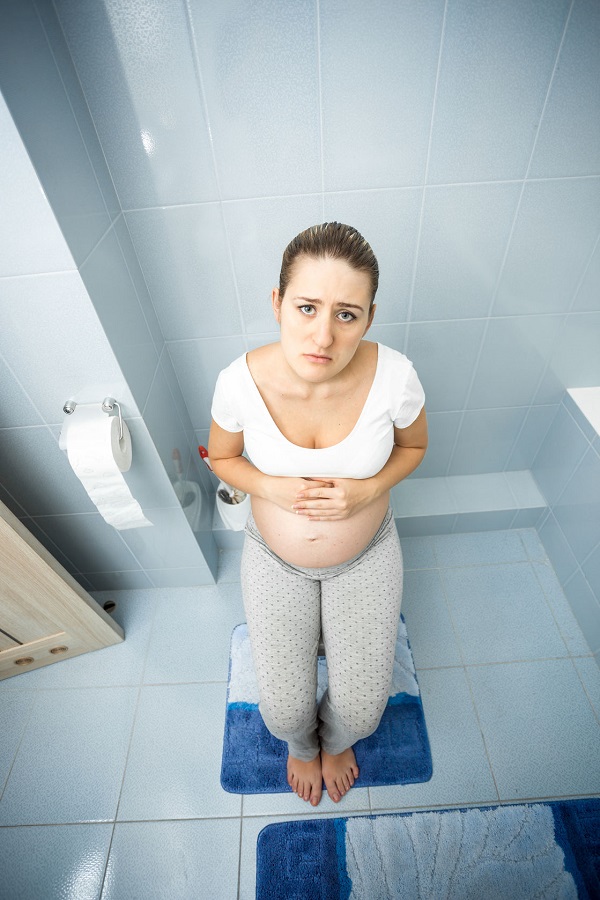
Oxalates
Occurs in inflammation of the kidneys, diabetes mellitus, as well as in the predominance of foods rich in oxalic acid in the diet (spinach, sorrel, tomatoes, asparagus).
Bacteria
Isolation of bacteria in the urine is of significant diagnostic value in pregnancy. The appearance of bacteria in the urine indicates the presence of an inflammatory process in the kidneys, bladder or urethra and requires mandatory treatment, even if the expectant mother is not worried about anything. Bacteria can also enter the urine from the vagina when the toilet of the external genitalia is poor. To determine the number of bacteria, their type and sensitivity to antibiotic therapy, an additional urine culture for flora is mandatory. To obtain the correct result of this analysis, after a thorough toilet of the external genital organs, close the vagina with a cotton swab, collect the middle portion of urine in a sterile container, tighten the lid tightly and deliver it to the laboratory within one and a half to two hours. Urine culture is prepared on average from 7 to 10 days and allows the doctor to decide whether it is necessary to carry out antibacterial treatment, and with what drugs.
Urine culture is prepared on average from 7 to 10 days and allows the doctor to decide whether it is necessary to carry out antibacterial treatment, and with what drugs.
Special urinalysis
Urine culture
Mandatory if bacteria are detected in the general urinalysis.
Purpose of the study. Performed to determine the number of bacteria, their type and sensitivity to antibacterial drugs.
Rules for collecting urine for analysis. To obtain a correct result from this test, urine must be collected after thorough toileting of the vulva by covering the vagina with a cotton swab. It is necessary to collect an average portion of urine in a sterile container, screw the lid tightly and deliver it to the laboratory within one and a half to two hours.
Urine culture is prepared on average from 7 to 10 days and allows the doctor to decide whether to carry out antibacterial treatment and with what drugs. If there is a clinical picture of inflammation, before the results of the culture are obtained, antibacterial treatment with a broad-spectrum antibiotic (acts on a large range of bacteria) is carried out, and in case of asymptomatic course of the disease or mild inflammation, treatment is not carried out until the results of the analysis are obtained.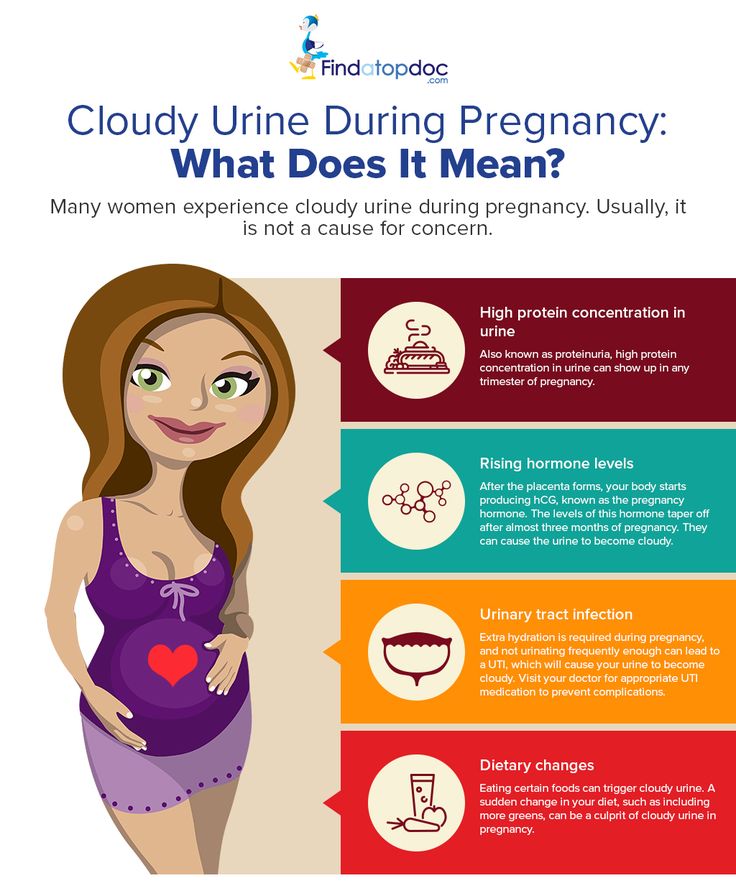
Nechiporenko urinalysis
This is a special urinalysis that shows the amount of erythrocytes, leukocytes and cylinders in 1 ml of urine.
Purpose of the study. This analysis is prescribed if there is a suspicion of an inflammatory process in the organs of the urinary system in a pregnant woman, if there are changes in the general analysis of urine. It gives more accurate results than a general urinalysis, and also allows you to control the ongoing treatment in dynamics.
Urine collection rules. Urine for analysis according to Nechiporenko is collected in the same way as for a general urine test.
Parameters under investigation
- The number of leukocytes - normally they should be less than 2 thousand in 1 ml . An increase in the number of leukocytes indicates the presence of pyelonephritis (an inflammatory disease of the pelvis and calyces of the kidneys).
- The number of erythrocytes is normally less than 1 thousand in 1 ml.
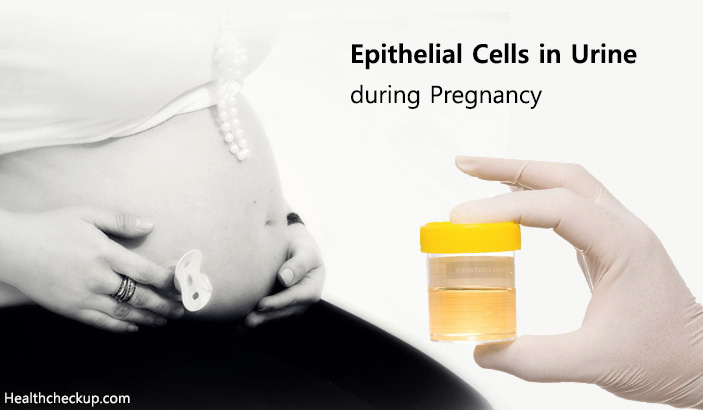 An increase in the number of red blood cells indicates the development of glomerulonephritis (inflammation of the renal glomeruli).
An increase in the number of red blood cells indicates the development of glomerulonephritis (inflammation of the renal glomeruli). - The number of cylinders is normally less than 20 in 1 ml. The detection of an increased content of cylinders indicates arterial hypertension, diseases of the cardiovascular system, and can occur with early toxicosis of pregnant women.
Urinalysis according to Zimnitsky
Purpose of the study. This analysis is prescribed to clarify the ability of the kidneys to concentrate and dilute urine, to identify latent edema. The study may be needed if you suspect the development of preeclampsia, renal failure, infections of the urinary system, as well as diabetes.
Urine collection rules. For urine analysis according to Zimnitsky, urine is collected during the day (24 hours) in 8 containers (jars), while the amount of fluid drunk is necessarily taken into account (the pregnant woman writes down how much fluid she drinks during the day, taking into account soups, fruits and vegetables).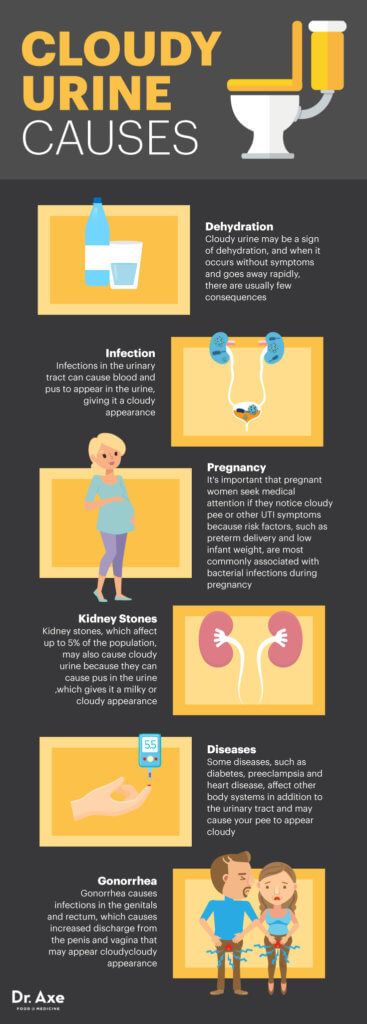 At 6 am, a woman urinates into the toilet, then all subsequent urine is collected in jars.
At 6 am, a woman urinates into the toilet, then all subsequent urine is collected in jars.
Total 8 servings:
- 1 serving - 6:00 a.m. to 9:00 a.m.,
- 2 portion - from 9-00 to 12-00 hours,
- 3 portion - from 12-00 to 15-00 hours,
- 4 portion - from 15-00 to 18-00 hours,
- 5 portion - from 18-00 to 21-00 hours,
- 6 portion - from 21-00 to 24-00 hours,
- 7 portion - from 24-00 to 3-00 hours,
- 8 portion - from 3-00 to 6-00 hours.
Jars are signed and delivered to the laboratory.
Test parameters. The amount and specific gravity of urine in each portion is estimated. Normal kidney function is characterized by:
- daily urine volume about 1.5 liters;
- predominance of daytime urination over nighttime;
- urinary excretion of approximately 70--80% of the liquid drunk per day;
- the specific gravity of urine in at least one of the portions is not lower than 1.
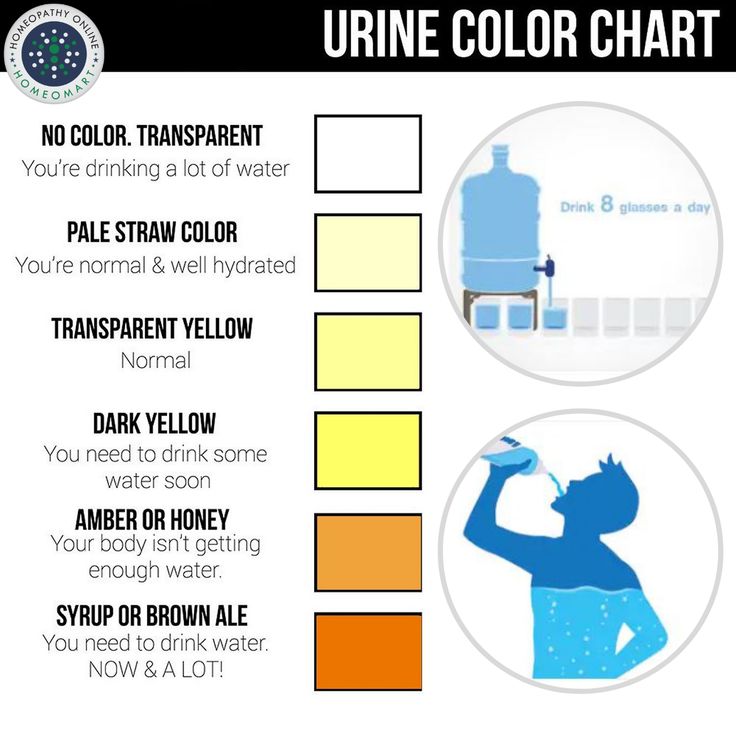 020--1.022;
020--1.022; - significant fluctuations during the day in the amount of urine in individual portions (from 50 to 400 ml) and the specific gravity of urine (from 1.003 to 1.028).
Deviations from these standards indicate a violation in the work of the kidneys.
Reberg's test
Purpose of the study. This test is ordered to determine the ability of the kidneys to filter urine. It must be carried out for all pregnant women with preeclampsia, with urinary tract infections, with kidney diseases, and with diabetes.
Urine collection rules. Before the test, intense physical activity, strong tea and coffee are excluded. Urine is collected during the day in one container, which is stored in the refrigerator during the entire collection time. After completing the collection of urine, measure the contents of the container, be sure to mix and immediately pour 70-100 ml into a special container or jar and deliver it to the laboratory, reporting the total volume of urine collected per day.
At the time of delivery of urine to the laboratory, blood is taken for creatinine from a vein.
Test parameters. The method is based on the assessment of glomerular filtration by the rate of purification of blood plasma from creatinine, a special product of protein breakdown. This indicator can be determined if you know the concentration of creatinine in the blood, in the urine and the daily volume of urine. This indicator is calculated using a special formula and is called creatinine clearance. Normally, the value of this indicator ranges from 75 to 134 ml / min / 1.7 m2. A decrease in the level of renal filtration indicates kidney damage and occurs with severe complications of pregnancy - gestosis, kidney diseases (pyelonephritis, glomerulonephritis), diabetes mellitus, arterial hypertension, urolithiasis.
Urine for 17-KC
This test was previously widely prescribed to pregnant women to determine the hormones produced by the cortex of the endocrine glands - the adrenal glands.












